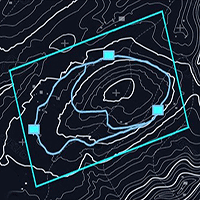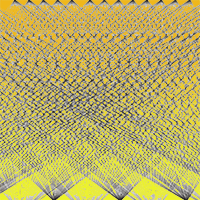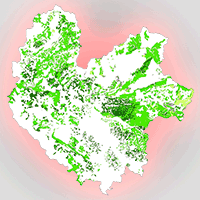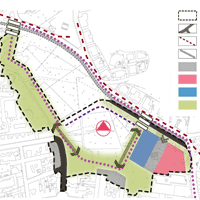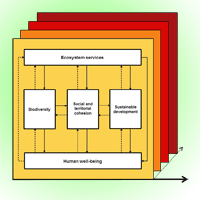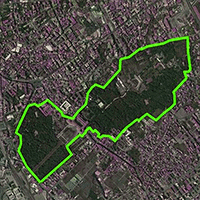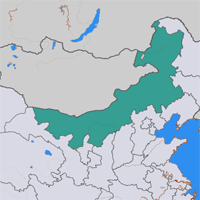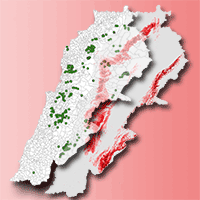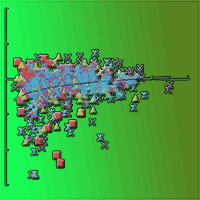The social and health benefits that green areas and forests can provide are now recognized in the scientific community worldwide. There is a growing interest in and demand for forest care initiatives and nature-based therapy, also as a result of the impacts of Covid-19 pandemic. In Italy, the increasing interest in alternative and integrated solutions for care and healthcare promotion have laid the basis for the implementation of several projects and activities, particularly those known as Forest Therapy (FT). These initiatives provide a business opportunity for forestry and social sectors, for the development of rural areas, and they are a cost-saving opportunity for the National Health System because of the expected benefits (as assessed by several clinical studies confirming the therapeutic effectiveness of these activities). Despite the importance, in Italy there is not a specific legal basis and standardized procedures to determine the suitability of a FT site. As a result, FT initiatives have been carried out in different environments, whether in urban or extra-urban forest areas, with the implementation of activities deemed suitable in a “self-referential” approach. Establishing a standard procedure for the recognition of FT suitable locations and related FT activities is a first step for the promotion of an important instrument that can meet several social needs. This work proposes (i) a standard procedure (“iter”) for the validation of a Forest Therapy and Urban forest therapy (UFT) site by the competent authority to obtain the official "environmental recognition" of site suitability; (ii) the technical and objective criteria to assess the stationary and environmental parameters of a site in order to be qualified as a FT/UFT site, both in natural and urban contexts. The iter and criteria proposed take into account the relevant national regulations, the literature found on the subject, and the expertise of scientists and technicians. The procedure and criteria proposed can be used as basis of a regulation on FT in Italy, ensuring suitable sites officially recognised by public institutions and providing a high-quality service to society. Finally, a baseline regulation would also facilitate opportunities for dedicated funding, as well as the recognition of “green prescriptions” for the prevention and treatment of certain health problems.
Keywords
, , , ,
Citation
Rivieccio R, Romano R, Orsini S (2024). Forest therapy in Italy: proposal of a standard procedure for validation of suitable sites. iForest 17: 192-202. - doi: 10.3832/ifor4543-017
Academic Editor
Marco Borghetti
Paper history
Received: Dec 15, 2023
Accepted: Apr 23, 2024
First online: Jul 04, 2024
Publication Date: Aug 31, 2024
Publication Time: 2.40 months
© SISEF - The Italian Society of Silviculture and Forest Ecology 2024
Open Access
This article is distributed under the terms of the Creative Commons Attribution-Non Commercial 4.0 International (https://creativecommons.org/licenses/by-nc/4.0/), which permits unrestricted use, distribution, and reproduction in any medium, provided you give appropriate credit to the original author(s) and the source, provide a link to the Creative Commons license, and indicate if changes were made.

Breakdown by View Type
(Waiting for server response...)
Article Usage
Total Article Views: 12360
(from publication date up to now)
Breakdown by View Type
HTML Page Views: 7657
Abstract Page Views: 2292
PDF Downloads: 2149
Citation/Reference Downloads: 3
XML Downloads: 259
Web Metrics
Days since publication: 531
Overall contacts: 12360
Avg. contacts per week: 162.94
Article Citations
Article citations are based on data periodically collected from the Clarivate Web of Science web site
(last update: Mar 2025)
Total number of cites (since 2024): 1
Average cites per year: 0.50
Publication Metrics
by Dimensions ©
Articles citing this article
List of the papers citing this article based on CrossRef Cited-by.
(1)
Antonelli M, Donelli D, Maggini V, Gallo E, Mascherini V, Firenzuoli F, Gavazzi G, Zabini F, Venturelli E, Margheritini G, Bassi I, Iseppi L, Meneguzzo F (2023)Demographic, psychosocial, and lifestyle-related characteristics of forest therapy participants in Italy: a multicenter cross-sectional survey. Healthcare 2023, 11, 1627.
CrossRef |
Gscholar
(2)
Bach Pagès A, Peñuelas J, Clarà J, Llusià J, Campillo i López F, Maneja R (2020)How should forests be characterized in regard to human health? Evidence from existing literature. International Journal of Environmental Research and Public Health 17 (3): 1027.
CrossRef |
Gscholar
(3)
Bachinger M, Rau H (2019)Forest-based health tourism as a tool for promoting sustainability. In: “International Dimensions of Sustainable Management”. Springer, Cham, Switzerland, pp. 87-104.
CrossRef |
Gscholar
(4)
Boere K, Lloyd K, Binsted G, Krigolson OE (2023)Exercising is good for the brain but exercising outside is potentially better. Scientific Reports 13 (1): 1140.
CrossRef |
Gscholar
(5)
Borriello G, Grazioli E, Zavarella P, Paolini R, Ianniello A, Silvestri D, Cerulli C, Parisi A (2022)Experiencing forest therapy in the Italian landscape: bathing in the Selva of Castelfidardo. Preprints 2022: 2022010275.
CrossRef |
Gscholar
(6)
Buckley RC (2019)Therapeutic mental health effects perceived by outdoor tourists: a large-scale, multi-decade, qualitative analysis. Annals of Tourism Research 77: 164-167.
CrossRef |
Gscholar
(7)
Cubbage F, Harou P, Sills E (2007)Policy instruments to enhance multi-functional forest management. Forest Policy and Economics 9 (7): 833-851.
CrossRef |
Gscholar
(8)
Di Iacovo FP, Connor D (2009)Supporting policies for social farming in Europe: progressing multifunctionality in respojnsaive rural areas. ARSIA, Agenzia Regionale per lo Sviluppo e l’Innovazione nel settore Agricolo-forestale, Firenze, Firenze, Italy, pp. 130.
Online |
Gscholar
(9)
Dodev Y, Zhiyanski M, Glushkova M, Shin WS (2020)Forest welfare services - the missing link between forest policy and management in the EU. Forest Policy and Economics 118: 102249.
CrossRef |
Gscholar
(10)
Doimo I, Masiero M, Gatto P (2020)Forest and wellbeing: bridging medical and forest research for effective forest-based initiatives. Forests 11 (8): 791.
CrossRef |
Gscholar
(11)
Doimo I, Masiero M, Gatto P (2021)Disentangling the diversity of forest care initiatives: a novel research framework applied to the Italian context. Sustainability 13: 492.
CrossRef |
Gscholar
(12)
Donelli D, Antonelli M, Baraldi R, Corli A, Finelli Gardini F, Margheritini G, Meneguzzo F, Neri L, Lazzeroni D, Ardissino D, Piacentini G, Zabini F, Cogo A (2023a)Exposure to forest air monoterpenes with pulmonary function tests in adolescents with asthma: a cohort study. Forests 14: 2012.
CrossRef |
Gscholar
(13)
Donelli D, Meneguzzo F, Antonelli M, Ardissino D, Niccoli G, Gronchi G, Baraldi R, Neri L, Zabini F (2023b)Effects of plant-emitted monoterpenes on anxiety symptoms: a propensity-matched observational cohort study. International Journal of Environmental Research and Public Health 20 (2023): 2773.
CrossRef |
Gscholar
(14)
ESPAS (2019)Global trends to 2030: challenges and choices for Europe. European Political Strategy Centre, European Commission Publications Office, Brussels, Belgium, pp. 52.
CrossRef |
Gscholar
(15)
European Parliament (2014)Regulation of the European Parliament and of the Council no. 1143/2014 of 22 October 2014 on the prevention and management of the introduction and spread of invasive alien species. Document 32014R1143, EUR-Lex, web site.
Online |
Gscholar
(16)
FAO/UNEP (2020)The state of the world’s forests 2020. Forests, Biodiversity and People. UNEP and FAO, Rome, Italy, pp. 214.
CrossRef |
Gscholar
(17)
Farrow MR, Washburn K (2019)A review of field experiments on the effect of forest bathing on anxiety and heart rate variability. Global Advances in Health and Medicine 8: 21649561 1984865.
CrossRef |
Gscholar
(18)
Gasparini P, Di Cosmo L, Floris A, De Laurentis D (2022)Italian National Forest Inventory Methods and Results of the Third Survey. Springer Tracts in Civil Engineering, Springer, Cham, Switzerland, pp. 576.
CrossRef |
Gscholar
(19)
Gobster PH, Kruger LE, Schultz CL, Henderson JR (2023)Key characteristics of forest therapy trails: a guided, integrative approach. Forests 14: 186.
CrossRef |
Gscholar
(20)
Grilli G, Sacchelli S (2020)Health benefits derived from forest: a review. International Journal of Environmental Research and Public Health 17: 6125.
CrossRef |
Gscholar
(21)
Ideno Y, Hayashi Yukina K A, Ueda K, Iso H, Noda M, Lee JS, Suzuk S (2017)Blood pressure-lowering effect of Shinrin yoku (Forest bathing): a systematic review and meta-analysis. BMC Complementary and Alternative Medicine 17: 409.
CrossRef |
Gscholar
(22)
Imai M (2012)An introduction to the Forest Therapy Society of Japan, Forest Therapy and Forest Therapist. In: “Forest Medicine” (Li Q ed). Nova Science Publishers Inc., New York, NY, USA, pp. 233-241.
Gscholar
(23)
Immich G, Robl E (2023)Development of structural criteria for the certification and designation of recreational and therapeutic forests in Bavaria, Germany. Forests 14: 1273.
CrossRef |
Gscholar
(24)
Interministerial Decree (2021)Approval of guidelines for the indentification of Old Growth Forest sites. Interministerial Decree n. 604983 of November 18th, 2021. Serie Generale Gazzetta Ufficiale n. 303 del 22.12.2021, pp. 27-29. [in Italian]
Online |
Gscholar
(25)
Kotte D, Li Q, Shin WS, Michalsen A (2019)International handbook of forest therapy. Cambridge Scholars Publishing, Cambridge, UK, pp. 610.
Online |
Gscholar
(26)
Lawrence G, Lyons K, Wallington T (2010)Food Security, Nutrition and Sustainability (1st edn). Routledge, London, UK, pp. 320.
CrossRef |
Gscholar
(27)
Leavell MA, Leiferman JA, Gascon M, Braddick F, Gonzalez JC, Litt JS (2019)Nature-based social prescribing in urban settings to improve social connectedness and mental well-being: a review. Current Environmental Health Reports 6 (4): 297-308.
CrossRef |
Gscholar
(28)
Lee I, Choi H, Bang KS, Kim S, Song M, Lee B (2017)Effects of forest therapy on depressive symptoms among adults: a systematic review. International Journal of Environmental Research and Public Health 14 (3): 321.
CrossRef |
Gscholar
(29)
Li N, Lee B, Liu RJ, Banasr M (2010)mTOR-dependent synapse formation underlies the rapid antidepressant effects of NMDA antagonists. Science 329: 959-964. 2010.
CrossRef |
Gscholar
(30)
Li Q (2023)New concept of forest medicine. Forests 14: 1024.
CrossRef |
Gscholar
(31)
Luchesa MV, Gatto P (2021)Forest bathing o Shinrin-yoku. Sherwood 254: 15-18. [in Italian]
Gscholar
(32)
Mao G, Cao Y, Wang B, Wang S, Chen Z, Wang J, Xing W, Ren X, Lv X, Dong J, Yan J (2017)The salutary influence of forest bathing on elderly patients with chronic heart failure. International Journal of Environmental Research and Public Health 14 (4): 368.
CrossRef |
Gscholar
(33)
Marušáková L, Sallmannshofer M, Kašpar J, Schwarz M, Tyrväinen L, Bauer N (2019)Human health and sustainable forest management. In: “Human Health and Sustainable Forest Management” (Marušáková L, Sallmannshofer M eds). Forest Europe, Zvolen, Slovakia, pp. 58-97.
Online |
Gscholar
(34)
MASAF (2013)Law no. 10 of January, 14th: Rules for the development of green urban areas. Ministero dell’Agricoltura, della Sovranità Alimentare e delle Foreste - MASAF, G.U. no. 27, 1st February 2013. [in Italian]
Online |
Gscholar
(35)
Menardo E, Brondino M, Hall R, Pasini M (2021)Restorativeness in natural and urban environments: a meta-analysis. Psychological Reports 124 (2): 417-437.
CrossRef |
Gscholar
(36)
Meneguzzo F, Albanese L, Antonelli M, Baraldi R, Becheri FR, Centritto F, Donelli D, Finelli F, Firenzuoli F, Margheritini G, Maggini V, Nardini S, Regina M, Zabini F, Neri L (2021)Short-term effects of forest therapy on mood states: a pilot study. International Journal of Environmental Research and Public Health 18: 9509.
CrossRef |
Gscholar
(37)
Meneguzzo F, Zabini F (2020)Terapia forestale - una collaborazione tra il Club Alpino italiano e il Consiglio Nazionale delle Ricerche. CNR editions, Rome, Italy, pp. 128. [in Italian]
Online |
Gscholar
(38)
MIPAAF (2022)Strategia forestale nazionale [National Forest Strategy]. Ministero delle Politiche Agricole Alimentari e Forestali - MIPAAF, Rome, Italy, Web site. [in Italian]
Online |
Gscholar
(39)
Nabhan GP, Orlando L, Smith Monti L, Aronson J (2020)Hands-on ecological restoration as a nature-based health intervention: reciprocal restoration for people and ecosystems. Ecopsychology 12: 195-202.
CrossRef |
Gscholar
(40)
Naomi AS (2020)Access to nature has always been important; with COVID-19, it is essential. Health Environments Research and Design Journal 13 (4): 242-244.
CrossRef |
Gscholar
(41)
Oh KH, Shin WS, Khil TG, Kim DJ (2020)Six-step model of nature-based therapy process. International Journal of Environmental Research and Public Health 17 (3): 685.
CrossRef |
Gscholar
(42)
Park BJ, Tsunetsugu Y, Kasetani T, Kagawa T, Miyazaki Y (2010)The physiological effects of Shinrin-yoku (taking in the forest atmosphere or forest bathing): evidence from field experiments in 24 forests across Japan. Environmental Health and Preventive Medicine 15 (1): 18-26.
CrossRef |
Gscholar
(43)
Rosa CD, Collado S (2019)Experiences in nature and environmental attitudes and behaviors: setting the ground for future research. Frontiers in Psychology, 763.
CrossRef |
Gscholar
(44)
Sandifer PA, Sutton-Grier AE, Ward BP (2015)Exploring connections among nature, biodiversity, ecosystem services, and human health and well-being: opportunities to enhance health and biodiversity conservation. Ecosystem Services 12: 1-15.
CrossRef |
Gscholar
(45)
Secco L, Paletto A, Romano R, Masiero M, Pettenella D, Carbone F, De Meo I (2018)Orchestrating forest policy in Italy: mission impossible? Forests 9 (8): 468.
CrossRef |
Gscholar
(46)
Sempik J, Hine R, Wilcox D (2010)Green care: a conceptual framework. A Report of the Working Group on the Health Benefits of Green Care, COST Action 866, Green Care in Agriculture, Centre for Child and Family Research, Loughborough, UK, pp. 121.
Gscholar
(47)
Sen M (2020)Forests: at the heart of a green recovery from the COVID-19 pandemic. UN DESA - Department of Economic and Social Affairs Policy Briefs, New York, NY, USA, pp. 4.
CrossRef |
Gscholar
(48)
Shin WS, Yeoun PS, Yoo RW, Shin CS (2010)Forest experience and psychological health benefits: the state of the art and future prospect in Korea. Environmental Health and Preventive Medicine 15 (1): 38-47.
CrossRef |
Gscholar
(49)
Song C, Ikei H, Miyazaki Y (2016)Physiological effects of nature therapy: a review of the research in Japan. International Journal of Environmental Research and Public Health 13 (8): 781.
CrossRef |
Gscholar
(50)
Sung J, Woo JM, Kim W, Lim SK, Chung EJ (2012)The effect of cognitive behavior therapy-based “forest therapy” program on blood pressure, salivary cortisol level, and quality of life in elderly hypertensive patients. Clinical and Experimental Hypertension 34 (1): 1-7.
CrossRef |
Gscholar
(51)
Takayama N, Morikawa T, Bielinis E (2019)Relation between psychological restorativeness and lifestyle, quality of life, resilience, and stress-coping in forest settings. International Journal of Environmental Research and Public Health 16 (8): 1456.
CrossRef |
Gscholar
(52)
Turunen AW, Halonen J, Korpela K, Ojala A, Pasanen T, Siponen T, Tiittanen P, Tyrväinen L, Yli-Tuomi T, Lanki T (2023)Cross-sectional associations of different types of nature exposure with psychotropic, antihypertensive and asthma medication. Occupational and Environmental Medicine 80 (2): 111-118.
CrossRef |
Gscholar
(53)
Vujcic M, Tomicevic-Dubljevic J, Grbic M, Lecic-Tosevski D, Vukovic O, Toskovic O (2017)Nature based solution for improving mental health and well-being in urban areas. Environmental Research 158: 385-392.
CrossRef |
Gscholar
(54)
Wolf KL, Lam ST, McKeen JK, Richardson GR, Van Den Bosch M, Bardekjian AC (2020)Urban trees and human health: a scoping review. International Journal of Environmental Research and Public Health 17 (12): 4371.
CrossRef |
Gscholar
(55)
Yu CP, Hsieh H (2020)Beyond restorative benefits: evaluating the effect of forest therapy on creativity. Urban Forestry and Urban Greening 51: 126670.
CrossRef |
Gscholar
(56)
Zhang S, Teng J, Zeng Y, Song H, Gu Z (2022)The effects of forest therapy on public mental health and circular economy: a policy support model in Japan. Frontiers in Public Health 10: 341.
CrossRef |
Gscholar
(57)
Zhang Z, Ye B (2022)Forest therapy in Germany, Japan, and China: Proposal, development status, and future prospects. Forests 13 (8): 1289.
CrossRef |
Gscholar
